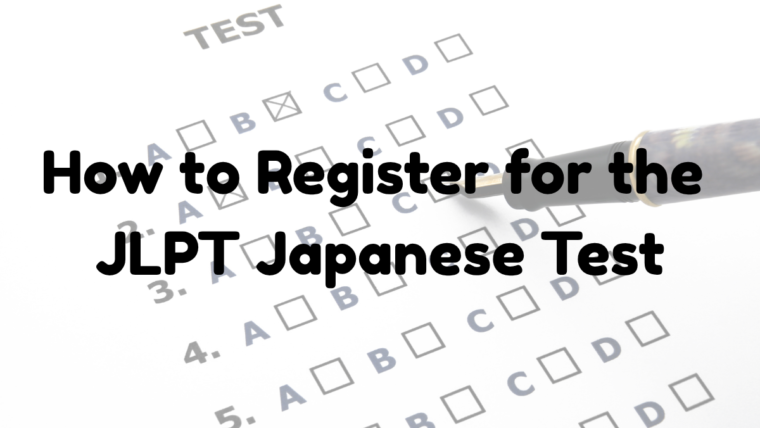Preparing for the JLPT Japanese Test reading section strategy can be overwhelming, especially with long passages, unfamiliar kanji, and time pressure. This guide will help you boost reading speed, master kanji, and improve comprehension strategies with actionable tips and free downloadable resources.
Build Vocabulary and Kanji Knowledge Daily
Building vocabulary and kanji knowledge is essential for boosting reading comprehension in the JLPT. Focus on learning common JLPT-level words and frequently used kanji, especially those that appear in signs, instructions, and everyday contexts. Use flashcards, apps like Anki, and JLPT-specific books to review regularly. Make sure to study both the meaning and reading of each kanji. A strong vocabulary base will help you understand passages faster and answer questions more accurately.
Understanding the JLPT Reading Section Strategy
The Reading (読解・Dokkai) section of the JLPT evaluates your ability to:

- Understand short and long passages
- Extract specific information
- Comprehend implied meaning
- Analyse sentence structure and tone
Before starting your preparation, go through our complete JLPT Japanese Test guide to understand the structure, levels, and scoring pattern.
Duration by Level:
- N5/N4: 25–30 minutes
- N3/N2/N1: 50–70 minutes
The reading section becomes significantly more complex as you move up levels. It includes email formats, advertisements, essays, notices, and opinion pieces.
JLPT Japanese Test Reading Practice Resources
Here are top free reading PDFs and websites you can use to practice efficiently:
🔗 Download Free JLPT Reading PDFs
- JLPT Official Workbooks PDF + Answer Keys
- JLPT Sensei – Reading Passages by Level
- JapaneseTest4You – Reading Practice by Level
- Nihongo-Pro Free Reading Tests
LSI Keywords Covered: JLPT Japanese Test reading practice PDF, free download, JLPT N5 Test, JLPT N4 practice test with answers
Before starting your preparation, go through our complete JLPT Japanese Test guide to understand the structure, levels, and scoring pattern.
Speed Reading Techniques for JLPT
Reading fast doesn’t mean skipping comprehension. Here’s how to build speed and accuracy:
Skimming & Scanning
- Skim for keywords and transition words (例えば, しかし, だから)
- Scan questions before reading to locate answers quickly
Set Time Goals
- For N4/N5: Spend no more than 2 minutes per passage
- For N2/N1: Time yourself to read ~250–300 characters/min
Chunk Text
Read 2–3 lines as one unit of meaning instead of going word by word.
Kanji & Vocabulary Mastery Tips
Kanji plays a crucial role in reading. Start early and review consistently.
Tools to Learn Kanji:
- WaniKani – Spaced repetition system
- Anki JLPT Decks – Flashcards for each level
- JLPT Vocabulary PDFs by Level
Pro Tip: Focus on JLPT-level kanji lists with usage examples and sentence patterns.
If you’re aiming for a job in Japan, understanding the role of JLPT certification for working in Japan is crucial for your career planning.
Comprehension Strategies by Level
| Level | Strategy |
| N5/N4 | Focus on identifying grammar patterns like particles (は, を), sentence endings (~ます/~です), and basic vocabulary |
| N3 | Look for logical connectors and try to summarize each paragraph |
| N2/N1 | Practice inference-based questions and tone recognition (neutral, negative, suggestion, etc.) |
Recommended Daily Routine
| Time | Activity |
| 15 mins | Vocabulary/kanji review |
| 30 mins | Read one full JLPT passage |
| 15 mins | Analyze answers, note mistakes |
| 10 mins | Shadow read aloud for fluency |
Bonus: Mobile Apps for Reading Practice
- LingoDeer: Structured grammar + reading
- Todai Easy Japanese News App: Real news with furigana & translations
- JLPT Vocabulary & Reading App (by MLC): Great for N5 to N2
JLPT Reading Practice for Each Level
N5/N4 Reading
- Short daily dialogues, signs, simple email
- Practice from: JLPT Sensei N5 Reading
N3 Reading
- Opinion pieces, casual blogs, public notices
- Use: Japanesetest4you – N3 Practice
N2/N1 Reading
- Logical essays, critical opinion texts
- Try: JLPT Official Advanced Workbooks
If you’re aiming for a job in Japan, understanding the role of JLPT certification for working in Japan is crucial for your career planning.
FAQs – JLPT Japanese Test Reading Practice
1. What is the best way to improve JLPT reading speed?
Practice with timed sessions, skimming questions first, and scanning for key phrases.
2. Are there free JLPT reading practice PDFs available?
Yes, the JLPT official website and JLPT Sensei offer downloadable PDFs.
3. How much time should I spend on reading daily?
At least 30–40 minutes per day for consistent improvement.
4. Is JLPT N4 reading hard without knowing all kanji?
It’s manageable. Focus on N4-level kanji and context-based guessing.
5. Can I use mobile apps to practice reading effectively?
Yes. Apps like Todai Easy News, LingoDeer, and JLPT vocabulary apps are effective supplements.
✅ Final Takeaway
Improving in the JLPT Japanese Test reading section is all about consistency, strategy, and exposure. Use the free PDF resources, apply speed reading techniques, and tackle kanji head-on. Whether you’re prepping for N5 or N1, smart reading practice can be your fastest path to success.




1 Comment